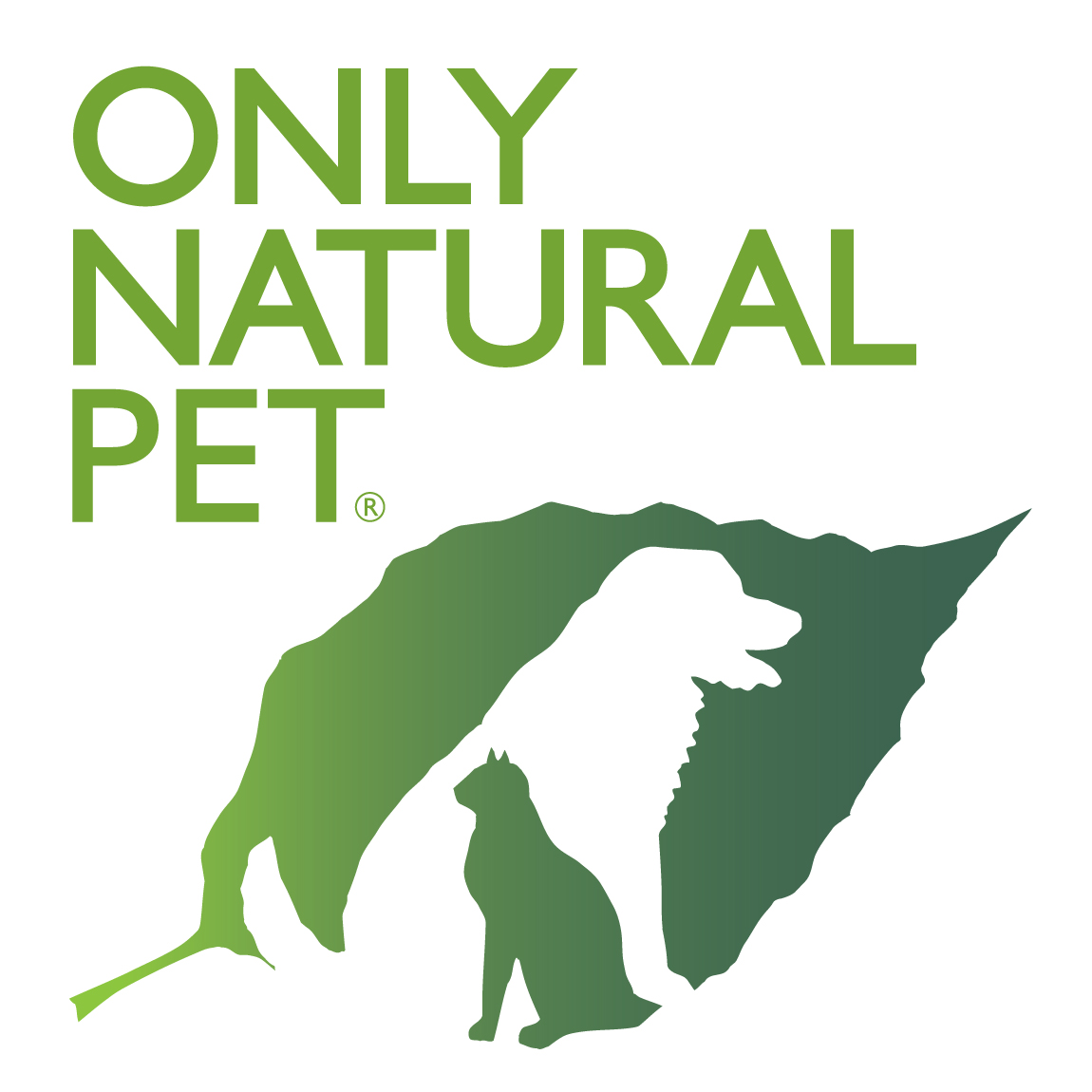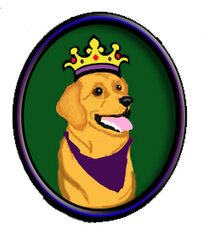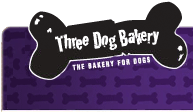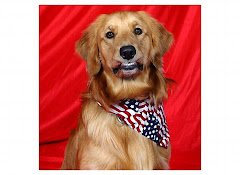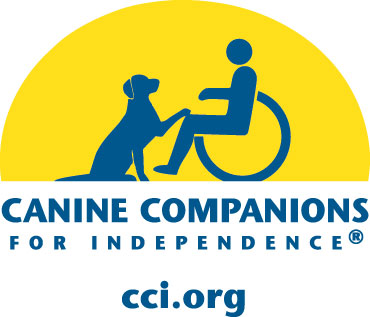Tuesday, June 25, 2013
Read more!
Dogs do a lot of things that we don’t really understand, one
of which is eating grass. Why do dogs eat grass?
Firstly, dogs eating grass is actually very common. Wild
dogs as well as domestic dogs will eat vegetation sometimes. One study showed
that approximately 75% of dogs had eaten grass or plants at some time…grass
being the most commonly eaten plant.
Okay, so my dog’s behavior is not unusual. But WHY do they
eat grass?
There many theories as to why dogs eat grass.
It may be nothing more than a natural behavior. Dogs are, in
a certain sense, omnivores. Before being domesticated, dogs ate whatever they
could hunt or scavenge. They would eat whole prey animals, including meat,
bones, organs, and the content of the stomachs, which more often that not
included plant material. This provided a balance diet for the dog. Wild dogs
still eat vegetation in addition to prey items.
Sometimes dogs eat grass as a means to make themselves throw
up. Perhaps the dog has an upset stomach, or even something such as acid
reflux, making them uncomfortable. Vomiting often makes them feel better. Most
often the dog will not act sick, so it is hard to know why they are doing it.
The majority of dogs that eat grass, however, do not throw up. In fact, studies
show that only about 25% of dogs that eat grass vomit regularly after doing so.
One interesting study reveals that the way dogs eat grass makes a difference.
Dogs that eat grass slowly and chew it rarely get sick. Dogs that eat grass
rapidly and swallow it without chewing almost always throw up. Whether this is
on purpose or not is not know for sure, but it certainly seems to be deliberate
on the dog’s part.
One of the beagles I have now will sometimes run out into
the yard, quickly gobble down a few mouthfuls of grass, and promptly throw it
up. Once he does that, he seems fine and eats his meal with no problem.
Another theory is that dogs eat grass as means to improve
digestion by adding fiber to their diet. Grass can also provide some nutrients
that may be missing from some commercial diets.
Other theories include grass eating from boredom, or a
condition called Pica, which is a compulsion to eat items that are not edible.
If your dog exhibits anxiety before eating grass, it may be the result of a
psychological condition. A vet should be consulted to determine if there is a
medical condition underlying the anxiety. There are ways to treat anxiety with
either medication or behavioral training.
Lastly, dogs may eat grass simply because they enjoy it.
Just as humans eat some foods simply because they enjoy the taste and/or
texture, dogs may be doing exactly the same thing. If this is the case, the dog
will rarely ever vomit. I once had a terrier that would graze like a cow,
happily munching on grass and leaves to her heart’s content. Never once did it
make her sick. She simply liked it.
Should grass eating be something to worry about?
The general consensus is that grass eating is not anything
to be concerned about. If your dog eats grass and throws up often, it is best
to let a vet determine if there are health issues behind the behavior. If you
have a grazer like my terrier, there is no reason to interfere with their grass
eating, but keeping an eye on them is always a good idea.
There are instances where grass eating should be avoided.
Often lawns are treated with chemicals. Herbicides and pesticides used on
lawns are quite toxic, especially if ingested. The dog may ingest the chemicals
by eating the grass, or by licking their paws after walking on treated grass. Treated
areas should be avoided at all cost. The ASPCA Animal
Poison Control
Center can help if you
think your dog has ingested these chemicals. They also have a list of toxic
plants that your dog should never eat.
If your dog is eating grass, carefully monitor its behavior
and seek veterinary advice if there seems to be health or behavioral issues.
Keep your dog away from treated areas, and keep an eye on the types of plants
they are eating.
More often than not, your dog is just doing something dogs
have always done. In most cases, there is nothing to be concerned about.
Read More......
Monday, May 27, 2013
Friday, April 5, 2013
Friday, March 22, 2013
Friday, March 15, 2013
Read more!
Make sure your pet is secured while you travel. Never leave
your pet (especially your cat) free to roam around the car. There are
many options for safely securing them—from harnesses to car seats to
crates and carriers. Find what works best for you and use it every time
your pet rides with you in the car.
Keep a pet kit in the car. Fill a small box with some things you might need while out with your pet: extra water, treats, a towel, waste bags, first aid essentials, and cleaning wipes (if you’ve ever had a pet get sick in your car, you know that the more cleaning aids you have on hand the better!). Keep the kit in the trunk of your car so you know that you’re always covered in an emergency.
Get your pet used to the ride. Some pets take to car rides right away, while others are a bit more resistant. Start your pet off with short drives around the block to get them comfortable, and by the time you need to take them somewhere further away, they’ll know what to expect.
Never leave your pet alone in the car. It doesn’t matter what the weather is like outside or how short of a time period you’ll be gone, leaving your pet alone in the car is incredibly dangerous. Even with the windows open, cars can easily become furnaces in hot weather, and in cold weather, they quickly become frigid without the heat blasting. Always choose to be safe rather than sorry and avoid ever leaving your pet alone in the car.
Don’t feed your pet a huge meal before setting out. Same goes for giving your pet a lot to drink. We all know how easy it is to get a little car sick—avoid the possibility of making your pet miserable on a long car ride by only feeding light meals. If you can, try to not feed your pet in the three to four hours prior to setting off. Read More......
5 Tips for Safe Car Travel
When
it comes to taking our pets for rides in the car, it’s only natural
that some will be more into it than others. But whether you have the dog
that loves to stick his head out the window
and catch a breeze, or the cat that is intent on scratching through the
upholstery on your backseat, there are some ways you can ease the
stress on everybody and plan for a more pleasant ride:
Keep a pet kit in the car. Fill a small box with some things you might need while out with your pet: extra water, treats, a towel, waste bags, first aid essentials, and cleaning wipes (if you’ve ever had a pet get sick in your car, you know that the more cleaning aids you have on hand the better!). Keep the kit in the trunk of your car so you know that you’re always covered in an emergency.
Get your pet used to the ride. Some pets take to car rides right away, while others are a bit more resistant. Start your pet off with short drives around the block to get them comfortable, and by the time you need to take them somewhere further away, they’ll know what to expect.
Never leave your pet alone in the car. It doesn’t matter what the weather is like outside or how short of a time period you’ll be gone, leaving your pet alone in the car is incredibly dangerous. Even with the windows open, cars can easily become furnaces in hot weather, and in cold weather, they quickly become frigid without the heat blasting. Always choose to be safe rather than sorry and avoid ever leaving your pet alone in the car.
Don’t feed your pet a huge meal before setting out. Same goes for giving your pet a lot to drink. We all know how easy it is to get a little car sick—avoid the possibility of making your pet miserable on a long car ride by only feeding light meals. If you can, try to not feed your pet in the three to four hours prior to setting off. Read More......
Posted by
Terri Oak
at
8:53:00 AM
0
comments
![]()
Friday, March 8, 2013
Friday, March 1, 2013
Friday, February 22, 2013
How to Choose a Kid-Friendly Family Dog
Read more!
In the age-old “cat people versus dog people” debate, the votes have been tabulated and the results show that your household is a “dog family.” The only problem is that you don’t actually have a family dog. Remedying the situation provides everyone in the household with companionship and entertainment, helps to teach kids about the responsibility of caring for another living thing and puts a stop to the endless begging, cajoling and whining for a dog. The only thing left to do is choose your dog, but how do you make such a big decision?
Do Your Research
Before you make a selection, you’ll need to have a bit of basic knowledge at your disposal. Purebred dogs purchased from a breeder may have a genetic disposition for certain health problems, but their personalities can be predicted more precisely when they’re still puppies. Mixed breed dogs tend to be healthier than their purebred counterparts, but may be a bit more difficult in terms of personality and predictability.
Visit a Shelter or Breeder
Choosing to adopt from a shelter rescues a dog that may otherwise be euthanized, allows you to brag about making a socially-conscious choice and gives you the option of adopting an adult animal, rather than a rambunctious youngster in need of training. Purchasing a puppy from a reputable breeder allows you to select a particular breed and bring home a young animal that you can train to suit the needs of your family. Whichever route you choose, you should make a few kid-free visits before making a decision so you can observe the environment the dog is accustomed to, learn more about their individual personalities and make an informed decision before the younger members of your family become attached to a dog that’s ultimately a bad fit with your collective lifestyle.
Think About Your Family Routine
Choosing the right dog for your family will require you to carefully examine the routine of your household. If everyone is away from the house for hours on end, you may want to select a more independent animal that requires less affection and dedicated play time. If you homeschool, have kids that haven’t yet reached school age and one parent stays home, you can comfortably select a dog that requires more attention.
Consider the Age of Your Youngest Child
If you have a toddler or infant that doesn’t yet respond well to verbal direction, you’ll need to make sure that the dog you bring into your home is patient and mature. In these situations, an adult dog may be more suitable than a puppy. Breeds that are known to be anxious, like Chihuahuas, will almost certainly be too nervous when the boisterous attention of a very young child is focused on the dog.
Realize That Babies and Puppies Don’t “Grow Up Together”
The idea that your baby and your puppy will “grow up together” is a charming one, but it’s just not feasible most of the time. Juggling the demands of an infant with those of an untrained, excitable puppy can easily prove to be overwhelming, which is why so many great dogs find themselves in a shelter. An adult dog may be a better choice for families with very young children, while a charming puppy is fine for households with older kids that can understand the proper handling and treatment of a fragile, high-energy puppy.
Keep Size in Mind
The adorable pup that fits in the palm of your hand will one day grow up, and its size will have an impact on how you care for it. Remember that even Saint Bernards start off relatively small, but they grow quickly and can be too much for a small household with young children. Before you fall in love with a puppy at the shelter, try to determine how big it will be when it reaches adulthood. A Great Dane-sized animal simply won’t fit in a small apartment.
Choosing a dog is an exciting milestone, but it’s not a trial-and-error situation. Surrendering a dog because he isn’t right for your family will almost always endanger his life, a situation that simply isn’t fair to the defenseless dog in your care. Rather than making an impulsive choice that you later discover was a bad one, take your time and determine exactly what sort of dog will be best for your family. When you’re patient and committed to making the right choice the first time, you’re making a wonderful addition to your family and are not risking the life of an innocent animal. Read More......
How to Choose a Kid-Friendly Family Dog
In the age-old “cat people versus dog people” debate, the votes have been tabulated and the results show that your household is a “dog family.” The only problem is that you don’t actually have a family dog. Remedying the situation provides everyone in the household with companionship and entertainment, helps to teach kids about the responsibility of caring for another living thing and puts a stop to the endless begging, cajoling and whining for a dog. The only thing left to do is choose your dog, but how do you make such a big decision?
Do Your Research
Before you make a selection, you’ll need to have a bit of basic knowledge at your disposal. Purebred dogs purchased from a breeder may have a genetic disposition for certain health problems, but their personalities can be predicted more precisely when they’re still puppies. Mixed breed dogs tend to be healthier than their purebred counterparts, but may be a bit more difficult in terms of personality and predictability.
Visit a Shelter or Breeder
Choosing to adopt from a shelter rescues a dog that may otherwise be euthanized, allows you to brag about making a socially-conscious choice and gives you the option of adopting an adult animal, rather than a rambunctious youngster in need of training. Purchasing a puppy from a reputable breeder allows you to select a particular breed and bring home a young animal that you can train to suit the needs of your family. Whichever route you choose, you should make a few kid-free visits before making a decision so you can observe the environment the dog is accustomed to, learn more about their individual personalities and make an informed decision before the younger members of your family become attached to a dog that’s ultimately a bad fit with your collective lifestyle.
Think About Your Family Routine
Choosing the right dog for your family will require you to carefully examine the routine of your household. If everyone is away from the house for hours on end, you may want to select a more independent animal that requires less affection and dedicated play time. If you homeschool, have kids that haven’t yet reached school age and one parent stays home, you can comfortably select a dog that requires more attention.
Consider the Age of Your Youngest Child
If you have a toddler or infant that doesn’t yet respond well to verbal direction, you’ll need to make sure that the dog you bring into your home is patient and mature. In these situations, an adult dog may be more suitable than a puppy. Breeds that are known to be anxious, like Chihuahuas, will almost certainly be too nervous when the boisterous attention of a very young child is focused on the dog.
Realize That Babies and Puppies Don’t “Grow Up Together”
The idea that your baby and your puppy will “grow up together” is a charming one, but it’s just not feasible most of the time. Juggling the demands of an infant with those of an untrained, excitable puppy can easily prove to be overwhelming, which is why so many great dogs find themselves in a shelter. An adult dog may be a better choice for families with very young children, while a charming puppy is fine for households with older kids that can understand the proper handling and treatment of a fragile, high-energy puppy.
Keep Size in Mind
The adorable pup that fits in the palm of your hand will one day grow up, and its size will have an impact on how you care for it. Remember that even Saint Bernards start off relatively small, but they grow quickly and can be too much for a small household with young children. Before you fall in love with a puppy at the shelter, try to determine how big it will be when it reaches adulthood. A Great Dane-sized animal simply won’t fit in a small apartment.
Choosing a dog is an exciting milestone, but it’s not a trial-and-error situation. Surrendering a dog because he isn’t right for your family will almost always endanger his life, a situation that simply isn’t fair to the defenseless dog in your care. Rather than making an impulsive choice that you later discover was a bad one, take your time and determine exactly what sort of dog will be best for your family. When you’re patient and committed to making the right choice the first time, you’re making a wonderful addition to your family and are not risking the life of an innocent animal. Read More......
Posted by
Terri Oak
at
12:38:00 AM
0
comments
![]()
Saturday, February 9, 2013
How to Give Medications to Dogs
Read more!
Don’t give your dog any medication until you have spoken to your
veterinarian to make sure it is the right medicine for the dog and the
circumstances. You should also ask for instructions on how to give the drug and
the correct dosage for your dog.
Insert the pill well to the back of the tongue in the middle of the mouth. If you place the pill too far forward or to the side of the tongue, the dog will spit it out. Close the dog’s mouth and massage or rub her throat until she swallows. If the dog licks her nose, the pill has been swallowed. Blowing briefly into the dog’s nose may also cause her to quickly swallow the pill. You can also give her a syringe full of water to make sure she swallows, or give the dog a small treat after the pill goes down.
Do not break the pill up into a powder. Powders have an unpleasant taste that dogs don’t accept well. Some pills also have a protective coating that is important for the delayed release of the medication, and crushing the pill will destroy the coating.
Some pills can be given in food. This can be done by making up small “meatballs” of dog food. Give the dog one or two undoctored meatballs, then one with the pill pushed deep into the center. Follow up with an undoctored one so the dog will continue to take the treats even if she gets a small taste of the medicine.
There are also commercial treats available made specfically for administering medication that are sticky enough to make it difficult for the dog to extract a pill while eating the treat. They are soft so they mold easily around the pill. Pill Pockets and Flavor Doh are two examples.
Always check with your veterinarian before giving any pills with food.
Pinch the dog’s lips together. Insert the end of the dispenser into the cheek pouch and seal the lips with your fingers. Tilt the dog’s chin upward and slowly dispense the liquid. The dog will swallow automatically. If you must give the dog a large quantity of liquid, you will need to pause periodically and give her time to swallow. Do not try to push a full syringe of liquid quickly down the dog’s throat!
If it becomes necessary to give injections at home (for example, if the dog is diabetic), have your veterinarian demonstrate the procedure. Some injections are given under the skin (subcutaneous) and others into the muscle (intramuscular). Directions that come with the product will indicate the correct route of injection.
The injection itself usually is not painful, although intramuscular injections may hurt somewhat as the medicine is injected. Dogs should be restrained. Having an assistant is helpful.
Begin by drawing the medicine up into the syringe. If there is an air bubble inside, flick the syringe to get the bubble to the top. Then point the needle toward the ceiling or into a sink and press the plunger to expel all air from the syringe and needle. Make sure the correct amount is still in the syringe after the air bubble is expelled. Select the injection site, part the hair, and cleanse the dog’s skin with cotton soaked in alcohol. Read More......
How to Give Medications to Dogs
Pills, Capsules and Tablets
To give a dog a pill, slip your thumb into the space behind one of the canine teeth and press upward on the roof of the mouth. As the mouth begins to open, press down on the lower jaw with the opposite thumb. Alternatively, press in on both lips from above the muzzle. As the skin pushes in behind the canines, the dog will open her mouth.Insert the pill well to the back of the tongue in the middle of the mouth. If you place the pill too far forward or to the side of the tongue, the dog will spit it out. Close the dog’s mouth and massage or rub her throat until she swallows. If the dog licks her nose, the pill has been swallowed. Blowing briefly into the dog’s nose may also cause her to quickly swallow the pill. You can also give her a syringe full of water to make sure she swallows, or give the dog a small treat after the pill goes down.
Do not break the pill up into a powder. Powders have an unpleasant taste that dogs don’t accept well. Some pills also have a protective coating that is important for the delayed release of the medication, and crushing the pill will destroy the coating.
Some pills can be given in food. This can be done by making up small “meatballs” of dog food. Give the dog one or two undoctored meatballs, then one with the pill pushed deep into the center. Follow up with an undoctored one so the dog will continue to take the treats even if she gets a small taste of the medicine.
There are also commercial treats available made specfically for administering medication that are sticky enough to make it difficult for the dog to extract a pill while eating the treat. They are soft so they mold easily around the pill. Pill Pockets and Flavor Doh are two examples.
Always check with your veterinarian before giving any pills with food.
Liquids
Liquid medicines, including electrolytes and water solutions, are administered into the cheek pouch between the molars and the cheek. A medicine bottle, eyedropper, or plastic syringe without the needle can be used to dispense the liquid.Pinch the dog’s lips together. Insert the end of the dispenser into the cheek pouch and seal the lips with your fingers. Tilt the dog’s chin upward and slowly dispense the liquid. The dog will swallow automatically. If you must give the dog a large quantity of liquid, you will need to pause periodically and give her time to swallow. Do not try to push a full syringe of liquid quickly down the dog’s throat!
Injections
Injecting any foreign substance into the body always carries with it the danger of causing an acute allergic or anaphylactic reaction. Treating anaphylactic shock requires immediate intravenous adrenaline and oxygen. This is one reason why it is best to have your veterinarian give injections. As a precaution, do not administer a drug by injection to a dog who has had any sort of past history of an allergic reaction (such as hives) to that drug.If it becomes necessary to give injections at home (for example, if the dog is diabetic), have your veterinarian demonstrate the procedure. Some injections are given under the skin (subcutaneous) and others into the muscle (intramuscular). Directions that come with the product will indicate the correct route of injection.
The injection itself usually is not painful, although intramuscular injections may hurt somewhat as the medicine is injected. Dogs should be restrained. Having an assistant is helpful.
Begin by drawing the medicine up into the syringe. If there is an air bubble inside, flick the syringe to get the bubble to the top. Then point the needle toward the ceiling or into a sink and press the plunger to expel all air from the syringe and needle. Make sure the correct amount is still in the syringe after the air bubble is expelled. Select the injection site, part the hair, and cleanse the dog’s skin with cotton soaked in alcohol. Read More......
Posted by
Terri Oak
at
11:57:00 PM
0
comments
![]()
Friday, January 18, 2013
Friday, January 11, 2013
Friday, January 4, 2013
Subscribe to:
Posts (Atom)





